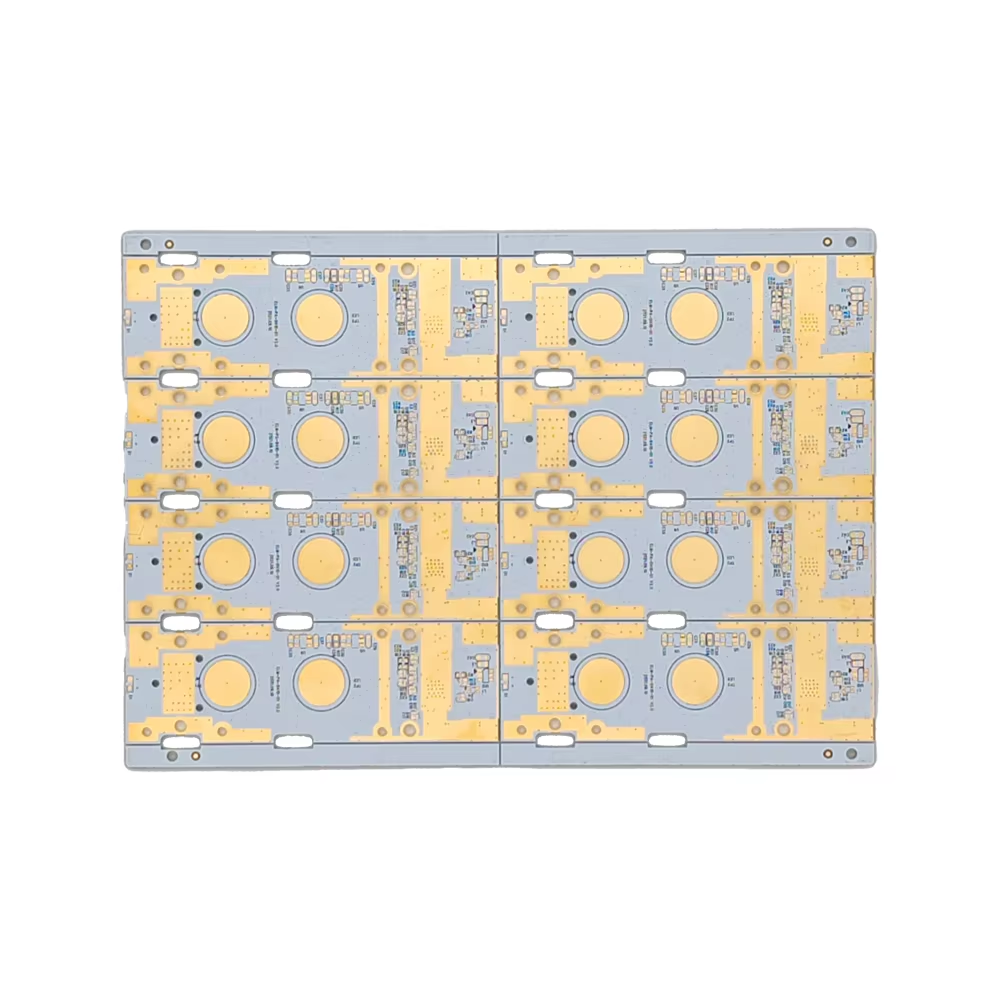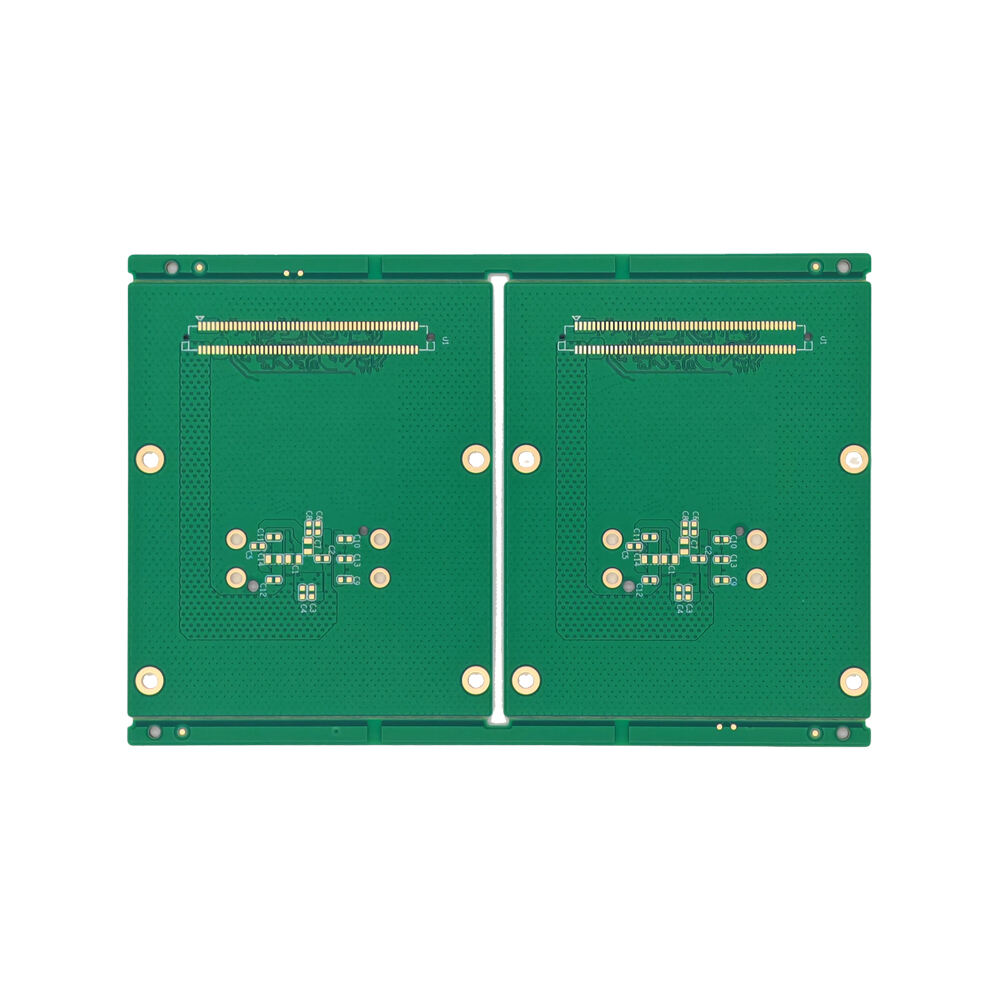The trend of miniaturization is profoundly influencing the PCB industry as electronic devices continue to become more compact and sophisticated. According to recent market statistics, the global market for high-density interconnect (HDI) PCBs is projected to grow from $19.5 billion in 2024 to $26.6 billion by 2029, reflecting a compound annual growth rate (CAGR) of 6.4%. This growth is imperative to support the increasing demand for smaller, more efficient devices like smartphones and wearables. HDI technology plays a crucial role in enhancing circuit density and performance, enabling more components to be packed into smaller spaces. For instance, in smartphones and wearable tech, HDI PCBs use techniques such as microvias and fine line trace designs to boost connectivity and functionality.
Recent advancements in materials are significantly revolutionizing PCB performance, offering solutions for modern electronic challenges. Innovations such as low-loss substrates and flexible PCBs are at the forefront, enhancing the efficiency and reliability of circuits. For example, flexible PCBs enable dynamic bending, leading to innovative designs in wearable technology and medical devices. Moreover, advanced materials like polyimide and ceramics provide superior thermal conductivity and signal integrity, vital for high-performance applications like aerospace and high-frequency communication devices. According to a study from Material Science Research, these materials not only enhance durability and flexibility but also play a crucial role in handling heat dissipation, ensuring optimal performance in demanding environments.
The advent of 5G technology is significantly boosting the demand for high-frequency printed circuit boards, as the technology requires PCBs capable of operating at higher frequencies with enhanced data rate capabilities. This escalation in demand is mirrored by the market growth projections, which indicate a substantial rise due to the widespread rollout of 5G networks. However, manufacturing PCBs for 5G applications comes with its set of challenges. Manufacturers are tasked with innovating processes to ensure that the PCBs maintain signal integrity and meet stringent performance requirements. This involves utilizing precise manufacturing techniques and advanced materials designed to reduce signal loss, vital for supporting the rapid data transfer rates associated with 5G technology.
ShenChuang Precision is revolutionizing PCB manufacturing through smart factory implementation with Industry 4.0 technologies. By integrating IoT and automation, these factories enable real-time data monitoring and predictive maintenance, drastically reducing downtime. ShenChuang Precision leverages these technologies to optimize efficiency and minimize waste, thus driving cost-effective production. For example, their use of machine learning for predictive analysis helps streamline operations, ensuring consistent quality throughout manufacturing processes.
Artificial Intelligence (AI) plays a pivotal role in enhancing quality control systems at ShenChuang Precision. AI technologies are employed to predict potential defects in PCB manufacturing in real-time, boosting yields and customer satisfaction significantly. Industry reports validate the effectiveness of AI in fault prediction, which leads to reduced error rates and improved product reliability. ShenChuang Precision's adoption of AI-driven systems ensures rigorous inspection processes, safeguarding the integrity of the final product.
Adopting sustainable practices in PCB manufacturing is crucial amidst growing environmental concerns. ShenChuang Precision stands at the forefront of eco-friendly initiatives, complying with stringent environmental regulations and certifications. Their strategies include waste reduction, material recycling, and responsible sourcing, all aimed at minimizing the ecological footprint. These efforts not only align with sustainability goals but also enhance the company's reputation in the PCB industry as a leader in eco-friendly manufacturing.
Multilayer PCBs are fundamental to the functionality of modern electronics, providing numerous benefits such as increased circuit density and reduced weight. These characteristics are critical across industries like automotive, aerospace, and consumer electronics, where design efficiency and performance are paramount. The integration of photosensitive dry film technology significantly enhances the fabrication precision and efficiency of OEM projects. By employing this technology, manufacturers can achieve finer geometries and reduce production time, ultimately leading to cost-effective and high-quality electronic components.

The Gerber file format is indispensable in PCB design, functioning as the digital blueprint for circuit board manufacturing. Its precision and industry-wide acceptance enable seamless communication between designers and manufacturers, ensuring design integrity. ShenChuang leverages this format to streamline its production processes, leading to faster and more accurate PCB manufacturing. By integrating Gerber-based approaches, they reduce errors and accelerate time-to-market, crucial advantages in today's fast-paced electronics industry.

Prototyping plays a vital role in PCB assembly, allowing developers to refine designs and meet exacting client specifications before full-scale manufacturing. This process ensures that products are tailored to unique needs, enhancing performance and efficiency. ShenChuang's custom development services exemplify this dedication to precision and innovation, with numerous successful projects enhancing client operations in sectors ranging from consumer electronics to industrial applications. These tailored solutions not only meet specific market demands but also provide competitive advantages through enhanced functionality.

Automated Optical Inspection (AOI) technology has significantly advanced, playing a crucial role in enhancing the accuracy of printed circuit board (PCB) inspections. These advancements ensure that defect detection rates in PCB manufacturing have dramatically improved. Recent studies show that AOI systems can identify up to 90% of defects, reducing manual inspection costs and increasing production efficiency. Incorporating AI algorithms allows AOI systems to adapt over time, improving precision and speed.
Reliability testing is pivotal for PCBs used in mission-critical sectors such as aerospace and medical. Methods such as thermal cycling, humidity resistance, and vibration testing ensure that these components can withstand extreme conditions. Industry standards, like IPC-A-610 and ISO 13485, govern these tests, emphasizing quality and performance time. These certifications are crucial for manufacturers aiming to deliver PCBs that are both durable and trustworthy in sensitive environments.
Effective thermal management is essential in PCB design to prevent failures and ensure longevity. With electronics generating considerable heat, innovative solutions such as thermal vias and heat sinks are increasingly adopted. Thermal vias enable better heat dissipation across layers, enhancing component performance. Advances in material science also present new heat-resistant substrates, making modern PCB designs robust against temperature-induced stresses.